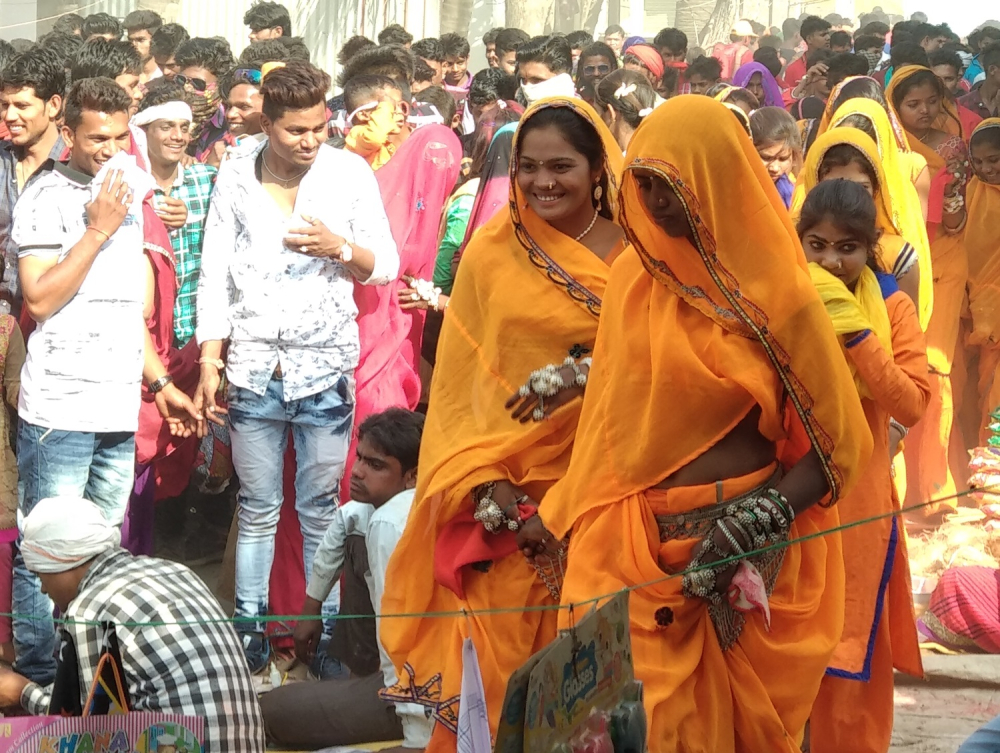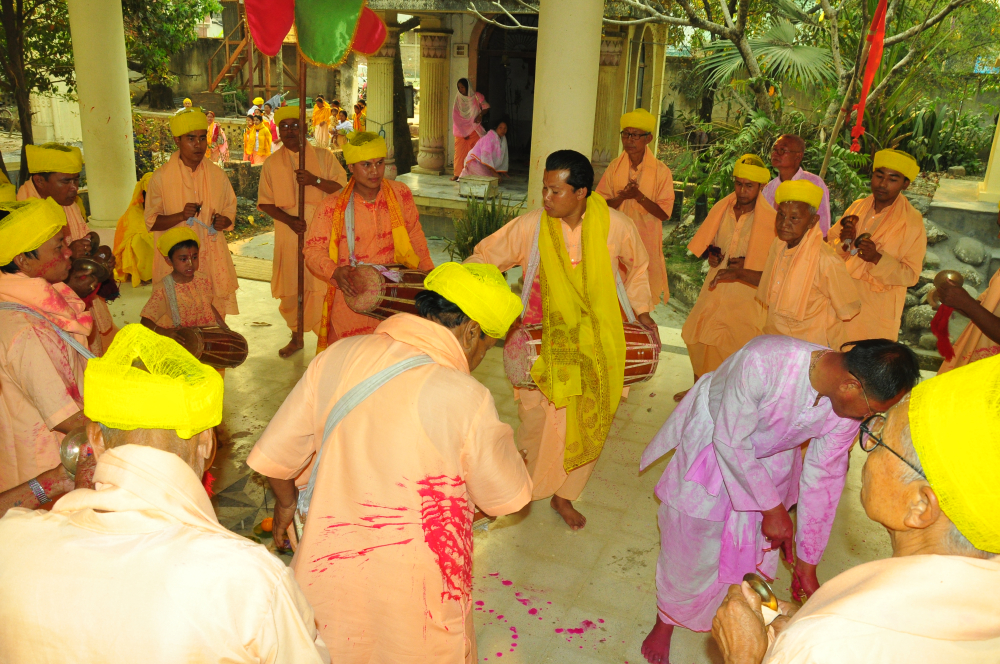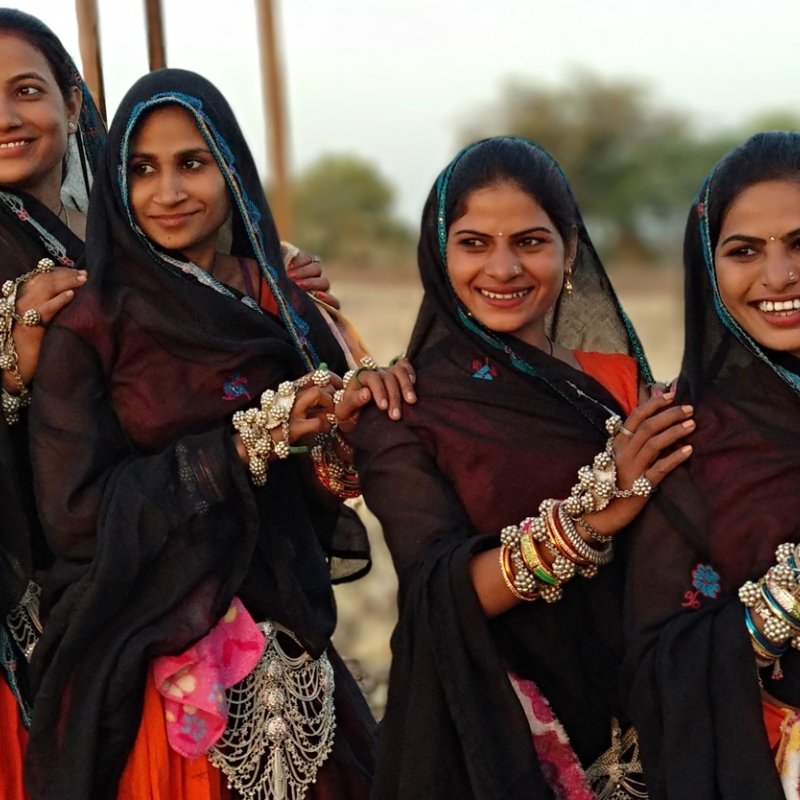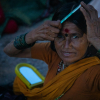While colour-play is an integral part of Holi, there are also variations in the rituals and practices associated with festivities across different regions. Sahapedia.org looks at two such less-known traditions associated with Holi—Bhagoria in Madhya Pradesh and Yaoshang in Manipur (Photo Source: Avadhesh Yadav)
The colourful festival of Holi is truly emblematic of the diversity of India. Traditionally considered a Hindu festival, over the centuries it has come to represent globally the colours of India in their entirety. Holi celebrations are usually spread over one night—the full-moon night (purnima) in the Hindu month of Phalgun (usually mid-March of the Gregorian calendar)—and the following day, when people gather together to play with colours.
The most popular story associated with Holi is that of Holika Dahan and Prahalad. According to this myth, King Hiranyakashipu wanted everyone to worship him. However, his son Prahalad was a devotee of Vishnu and refused to worship his father. To appease her brother by killing his son, Hiranyakashipu’s sister Holika (who had a boon from Lord Brahma that she could not be burnt) sat in a burning pyre with young Prahalad. However, Prahlad’s devotion saved his life and Holika was burnt instead. To commemorate this victory of good over evil, bonfires are lit the night before Holi as part of the traditional festivities.
In astronomical terms, this full moon ‘day’ is known as the Spring Equinox, when the length of the day and night is supposed to be almost equal. It also marks the moment the Sun crosses the celestial equator from the south to the north. Interestingly, in some parts of the world (though not as popularly in India), the March full moon is also called the ‘worm moon’ since it coincides with the time when earthworms begin to emerge from the thawing earth.
Much like these disparate global connections with the purnima, in India too there are variations in the rituals and practices associated with festivities in different regions. The Lath-Mar Holi of Barsana and Vrindavan, Dol in West Bengal (especially Santiniketan) and the Phoolonwali Holi by the widows in Vrindavan are a few popular examples of such regional observances. There are, however, other equally fascinating practices associated with Holi that are not as well known, and here we take a look at two of them—the Bhagoria Festival of Madhya Pradesh and the Yaoshang Festival of Manipur.

Men and women of marriageable age are allowed to elope during the Bhagoriya fair in Madhya Pradesh (Photo Source: Avadhesh Yadav)
Bhagoria festival, Madhya Pradesh
The Bhagoria, or Bhagoriya, festival—allegedly connected with the elopement of boys and girls—is mainly celebrated by tribal communities in Alirajpur, Jhabua and other districts of Madhya Pradesh. The festival is usually observed in the week leading up to Holi, although some villages may observe it on different dates as well. The main celebration entails the organisation of special haats, or fairs, in villages, during which villagers indulge in playing with colours, singing, dancing and other forms of revelry.
The most interesting aspect, however, and one from which the festival and the region possibly gets its name, is the eloping of men and women of marriageable age, who are later married according to their customs. The boys apply red gulaal (coloured power) on the face of the girl who they wish to marry and the girl accepts the proposal by returning the gesture. If it is not reciprocated, the suitor may persuade and convince the girl.
On the other hand, if a girl is interested in a boy, she can spit betel juice in his direction and it’s expected that the boy will then run away with her. Should he fail to do so, explains Mushtak Khan, Sahapedia consultant and former deputy director of the Crafts Museum, the boy is considered a coward.
These special Bhagoria haat melas are also organised to observe the collective celebrations of the region. It’s not unusual to see men and women walk around in groups, flirting with each other. The women dress in vibrant hues of red, adorn themselves with the finest silver jewellery and use mirrored accessories typical to this region.
While this concept of elopement is accepted as part of local lore and traditional practice, this association with the Bhagoria dance (which is performed during the festival) came under scrutiny when the dance was included as part of the Republic Day parade in 2015. At the time, there was some objection to this connection, and some members of the concerned tribes insisted that the word ‘bhagoria’ is a distortion of the word ‘bhongariya’, referring to a material used for Holi pujan (worship rituals).

A typical Meitei Holi group performing in Imphal's Govindaji Temple on the second day of Yaoshang (Photo Source: GuruBidya/Wikimedia Commons)
Yaoshang festival, Manipur
Yaoshang—also called the Holi of Manipur—is celebrated in the state with a host of activities centred around indigenous music and dance. The festival is celebrated over six days, and combines Hindu and Meitei practices. One of the main aspects of the festivities is the Thabal Chongba folk dance, which takes place at night.
Literally meaning ‘dancing in the moonlight’, Manipuri men and women sing local folk songs and dance to the beats of the dholakar drum. They wear the traditional Manipuri costume—pheijom (dhoti) for men and phanek (skirt) for women—for the occasion. This is one of the rare instances when men and women are allowed to hold hands in public, making this a form of flirtation among the two sexes. The men also give women money during the dance as a way of showing their prosperity and eligibility, says Dr Sapam Ranbir Singh, Research Officer, Janapada Sampada Division, IGNCA. In the 1950s, lanterns were introduced in the moonlight dance, and besides the dholakar, dishes and metal tubs also began to be used for music. At present, there are live bands, and a modern spin to both the music and the dress.
Since Hindu Vaishnavaites form a significant part of the Manipuri Meitei population, the lore of Holika Dahan is symbolically referenced by the burning of a straw hut that is built specifically for the occasion. Other aspects of the festival involve engaging in sports such as races, traditional wrestling (mukna) and football. Before the festivities commence, children and young women go from door to door asking for donations, known as nakatheng.
Sankirtana, the singing of prayers and hymns accompanied by musical instruments, is carried out on the second day of the Yaoshang festival. The remaining four days of the festival include various other native traditions and rituals. During Yaoshang, men, women and children adorn themselves in beautiful shades of yellow as the colour represents prosperity and the onset of spring with which the festival is associated.













